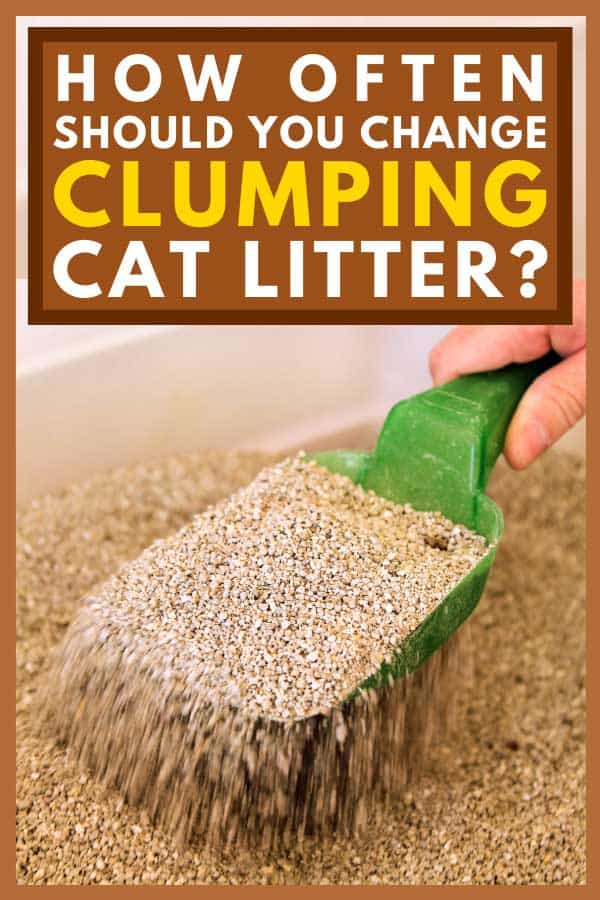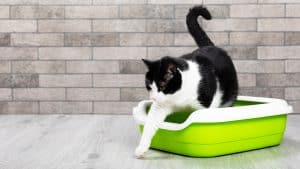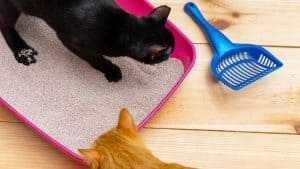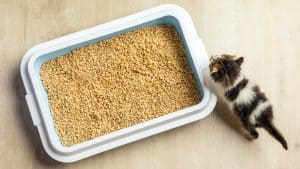You want to provide your cat with a clean litter box so that he will be comfortable to do his business and stay healthy.
Using clumping litter can make cleaning your cat’s litter box a breeze. But how do you know how often to change the clumping litter? We’ve researched to give you the answer.
When using clumping, clay-based litter, the consensus among veterinarians and litter manufacturers alike is that you should scoop the litter clean daily. How often to change the entire contents of the litter box, however, will depend on:
- The number of cats using the litter box.
- How many litter boxes do you have in the house?
- The depth of the litter inside the box.
- How frequently do you scoop out feces and urine clumps from the box?
The general rule of thumb is to replace the clumping litter on a bi-weekly basis.
Wash the empty litter box with warm water and mild detergent each time you change the litter, and allow the box to dry entirely before re-filling.
Keep reading, and we’ll share the best methods for cleaning and replacing the clumping litter in your cat’s litter box.
How to Clean Clumping Litter?
Clumping litter is the most popular type of litter used among cat owners because it gives you the ability to efficiently remove waste from your cat’s litter box with just a few quick scoops.
Clay-based clumping litter is typically low-tracking and low-dust to help keep the vicinity of your cat’s litter box clean, too.
When highly absorbent bentonite becomes saturated, this all-natural clay material found in clumping litter soaks up urine to form a tight clump.
The clump of urine can quickly be scooped out of the box, leaving behind dry, unused litter granules for future use.
To scoop the clumping litter:
- Keep a trash bin with a lid lined with a plastic bag near the litter box.
- Use a slotted scooper to lift out urine clumps and feces; gently sift the scooper to allow dry litter granules to fall back into the litter box.
- Dump the scooped waste into the trash bin—Tie up the plastic liner bag to remove the dirty litter from the container when full.
- Discard clumping litter bagged into the trash.
- Always wash your hands thoroughly after handling used litter.
How Often Should I Scoop Clumping Litter?
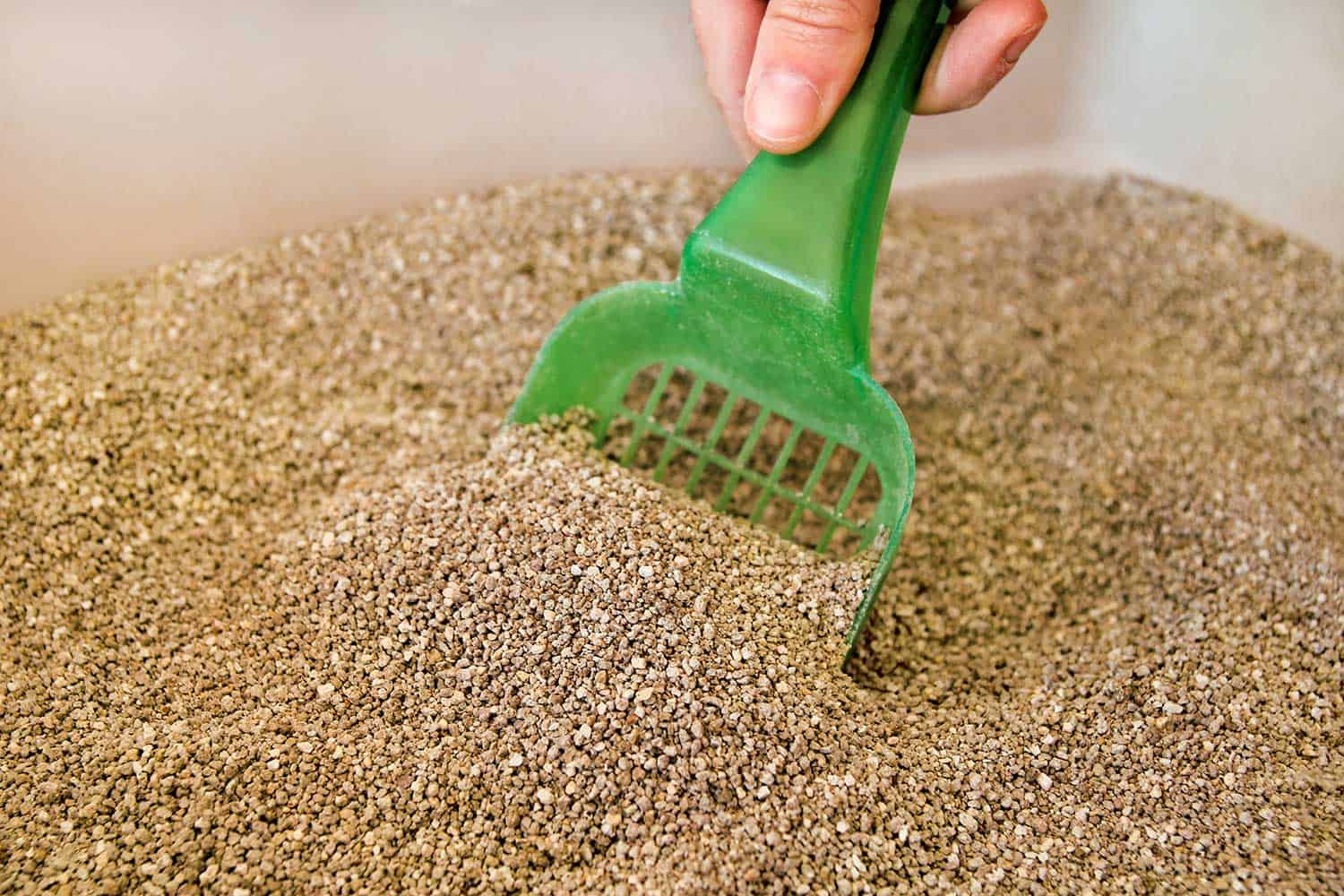
Scoop waste from clumping litter daily. Depending on the number of cats using the litter box and the frequency with which your cat relieves herself, you might need to scoop waste between two and four times daily.
Removing waste from the litter box daily will not only encourage your cat to continue to use the box but also help you detect early warning signs of medical conditions your cat might be experiencing.
Check out our blog, “How Often do Cats Pee and Poop?” to learn more about health warning signs that you might find in the litter box.
How Often Should I Change Clumping Litter?
The frequency at which you dump the contents of the litter box to change the clumping litter will depend on the usage of the box.
The Humane Society of the United States recommends that you supply one litter box per cat in your household, plus one additional box.
Each litter box should be scooped clean daily. Purina recommends dumping and changing the clumping litter in the litter box at least once every other week.
We’ve found that most veterinarians agree a bi-weekly litter change schedule is healthiest for your cat.
You should also wash the emptied litter box each time you dump and change the litter contents.
Use warm water and a mild detergent to cleanse the box. Allow the box to dry completely, then re-fill with clean clumping litter.
How Deep Should I Fill the Litter Box?
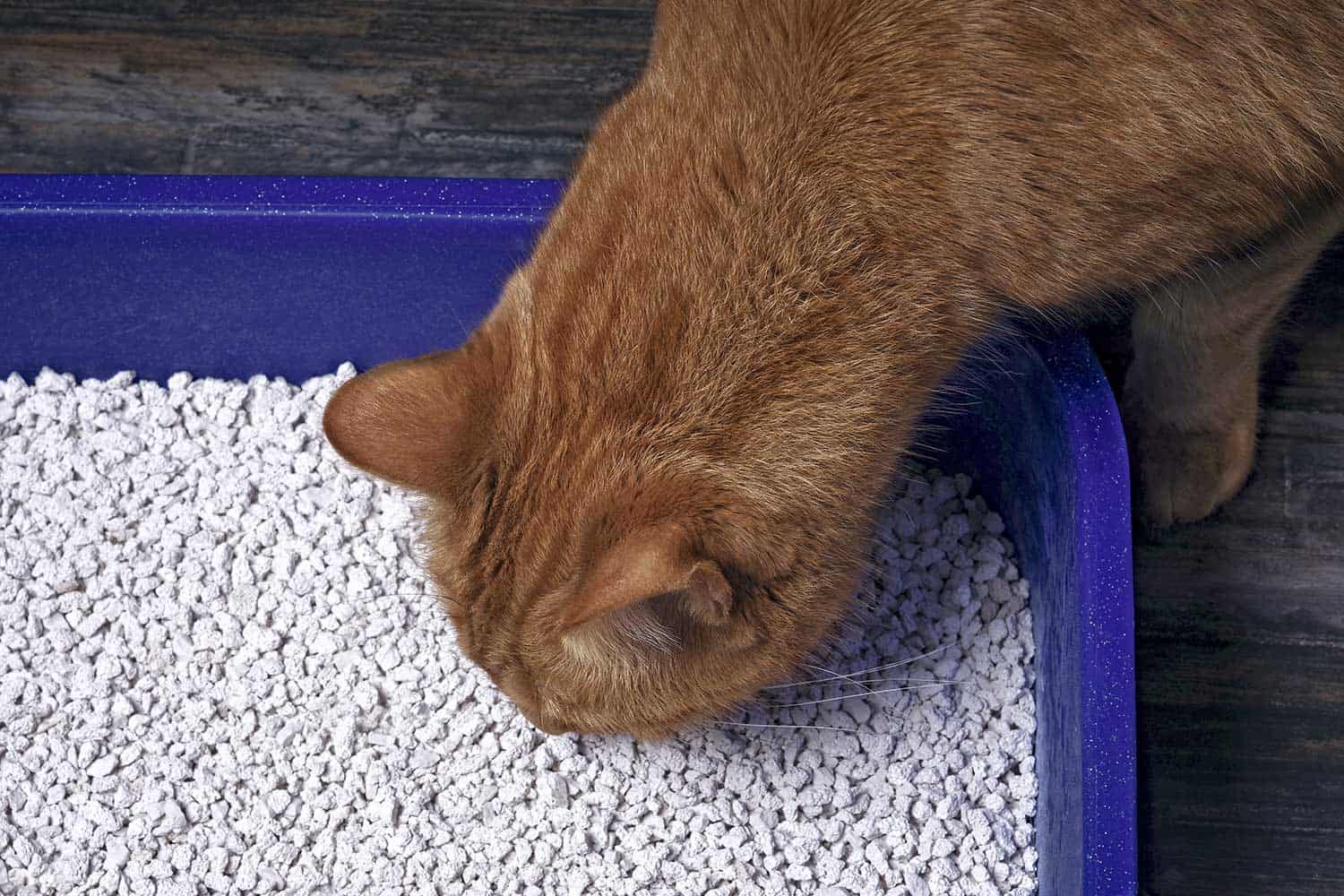
Overfilling the litter box with clumping litter will not reduce how often you should change the litter. Overfilling the litter might even deter your cat from using the litter box. Most litter manufacturers recommend using 3-4 inches of litter.
However, we suggest you fill the box with at least 2 inches of litter and see how your cat likes it. Add slightly more litter if you think your cat prefers to dig.
Can I Add Litter Between Changes?
Some cat owners add litter between changes if they notice the contents of the box seem low during daily scooping. It is OK to add clean clumping litter to the box if the box appears low.
Take care to sift your scooper to avoid removing excess clean litter sufficiently. You should still change the entire contents of the litter on a bi-weekly basis.
If you are frequently adding litter because your cat seems to swipe out the litter as he does his business, you might consider using a litter box with higher sides or a covered litter box instead.
How Long Does Clumping Cat Litter Last?
Clumping litter tends to last longer than non-clumping litter because the dirty litter is tightly clumped and easily scoopable; you remove less clean litter when you clean the box.
Arm & Hammer’s Clump and Seal litter, for example, does not have an expiry date, so you can keep the litter as long as it lasts, depending on your household’s usage.
Click Here To See This Litter On Amazon
Clay-based clumping litters are non-toxic but not recommended for use for kittens. You can purchase biodegradable clumping litters made from pine, wheat, or recycled paper that are safe to use for kittens.
To help make your litter selection for kittens, check out our blog, “8 Types of Biodegradable Cat Litter.”
Why is My Cat Litter Not Clumping?
There are a few reasons why you might encounter clumping litter that has not clumped:
- Oversaturated litter becomes pasty rather than clumped because the clay has reached its maximum absorbency capacity and is not able to hold any more liquid.
- There is not enough litter in the box to absorb the liquid.
- Your cat has not covered the urine with litter, so liquid seeps to the bottom of the box.
- Litter hasn’t had enough time to absorb all the liquid.
Is Clumping Better than Non-clumping?
The type of cat litter you select is entirely the preference of you and your cat. Many cat owners prefer clumping cat litters because they are:
- Scoop-able
- Changed less frequently than non-clumping litter
- Highly odor absorbent
- Low-tracking
- Low-dust
Both clumping and non-clumping types of cat litter are non-toxic to you and your cat. Whether you prefer clumping cat litter or non-clumping cat litter, you can select from clay-based, silica-based, and biodegradable materials for both types.
Some litters are scented by using natural fragrances. Unscented litter contains additives and odor-elimination materials.
In Conclusion
Keeping clumping litter cleaned daily and changed on a bi-weekly basis ensures a happy, healthy cat and a tidy, odor-free home.
